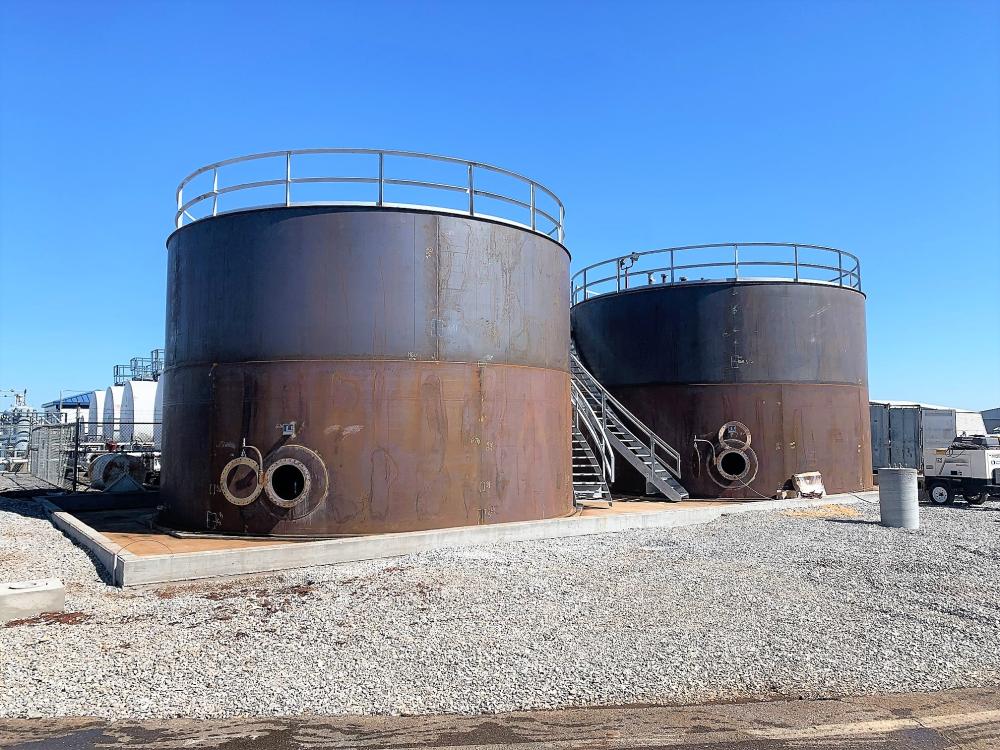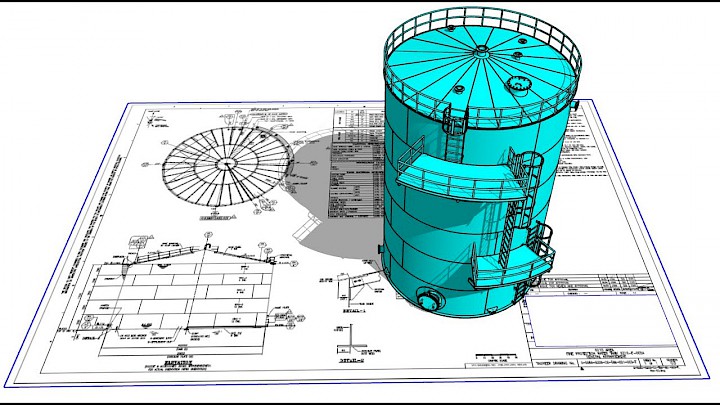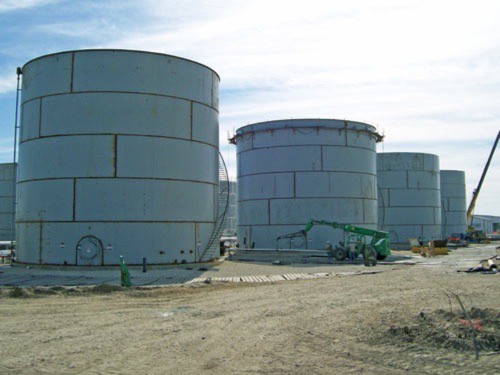Systematic Overview of API 650 Welding Inspection Methods and Tools
Wiki Article
A Detailed Take A Look At the Setup Process of Welding Examination Techniques
Welding examination is a critical process that assures architectural integrity and security. The installation of assessment techniques includes numerous organized actions, each indispensable to accomplishing reputable results. From planning and device choice to conducting aesthetic and non-destructive tests, each stage demands cautious interest. Understanding these procedures can greatly improve high quality assurance in welding jobs. What difficulties develop in applying these strategies, and how can they be effectively attended to?Recognizing the Relevance of Welding Inspection
Welding examination is a critical element of guaranteeing architectural integrity and safety in building and construction and production processes. This practice includes evaluating welded joints for problems, making sure that they meet details criteria and regulations. By methodically assessing weld quality, examiners can recognize issues such as fractures, voids, and insufficient blend, which can jeopardize the stamina and resilience of frameworks.The significance of welding evaluation extends past prompt security worries; it aids protect against costly failings and possible hazards in the long term. Effective examination strategies foster conformity with market standards, therefore enhancing the general integrity of bonded elements. Additionally, a robust evaluation procedure adds to preserving the online reputation of contractors and manufacturers, as it assures clients of the top quality of their projects. Inevitably, recognizing the significance of welding inspection is crucial for advertising secure building methods and ensuring the longevity of important infrastructure and products.
Picking the Right Devices for Examination
When selecting the suitable devices for inspection, it is necessary to contemplate the certain demands of the welding procedure and the products included. Different inspection methods, such as aesthetic, ultrasonic, and radiographic screening, require distinct devices tailored to their special needs. For visual inspections, devices like magnifying calipers and glasses are important for reviewing weld high quality. Ultrasonic testing calls for specific devices capable of transmitting and getting acoustic waves to detect internal imperfections. Radiographic screening, on the other hand, makes use of X-ray or gamma-ray resources alongside delicate film or digital detectors to reveal incongruities.
Additionally, personal safety tools (PPE) is vital to ensure the security of assessors throughout examinations. Selecting the right devices not just boosts the precision of examinations however additionally contributes to the general stability and safety of the welding job. Subsequently, an extensive understanding of available devices and their applications is crucial for efficient welding assessment.
Getting ready for the Evaluation Refine
Before starting the evaluation procedure, it is vital to establish a thorough plan that describes the scope and objectives of the examination. This plan should consist of details standards that specify what comprises acceptable quality in the welding job being evaluated. Recognizing the appropriate codes and criteria is vital, as they will lead the inspection standards and approaches.In addition, employees entailed in the examination has to be properly trained and accredited in welding assessment methods to guarantee reliability and precision. A checklist can be advantageous in arranging the different facets of the inspection, ranging from equipment preparedness to environmental problems that can impact the evaluation.

Finally, logistical considerations such as scheduling, available sources, and interaction between staff member need to be addressed. By preparing methodically, examiners can enhance the performance of the assessment and ensure that all crucial elements are properly thought about before waging the inspection itself.
Performing Aesthetic Evaluations

Performing aesthetic assessments is an essential step in the welding assessment procedure, calling for cautious prep work to guarantee reliable evaluation. Examiners need to be familiar with key problem signs that can signal prospective issues in weld quality. By concentrating on these elements, one can boost the general reliability of the inspection end results.
Planning For Visual Assessment
Aesthetic assessment acts as a vital initial step in the welding examination procedure, guaranteeing that any potential problems are identified early (API 650 Welding Inspection). Correct prep work is important for effective visual evaluation. Examiners must start by examining relevant documents, including welding treatments and specifications, to recognize the project requirements. They need to collect required devices, such as amplifying glasses, flashlights, and appropriate personal safety tools (PPE) A detailed examination of the evaluation area is important; assessors must confirm it is tidy and complimentary of obstructions. Additionally, it is vital to establish excellent illumination conditions to improve presence of welds. By taking these preparatory steps, examiners can create an environment for identifying disparities and guaranteeing the stability of the bonded frameworksKey Defect Indicators
A thorough understanding of crucial problem indicators is important during visual inspections to ensure the high quality and safety and security of welded joints. Inspectors should concentrate on certain indications such as fractures, porosity, damages, and insufficient fusion. Splits may look like sharp lines and can endanger architectural integrity. Porosity materializes as small holes that can deteriorate weld toughness. Undercuts, which are grooves along the weld side, can bring about stress focus. Insufficient combination shows that the weld metal did not correctly bond with the base material, leading to a weak joint. By methodically recognizing these defects, examiners can identify compliance with sector criteria and boost the general dependability of welded structures, eventually contributing to Resources much safer functional conditions.Implementing Non-Destructive Checking Strategies

Countless non-destructive testing (NDT) techniques are important to assuring the honesty of bonded structures without compromising their performance. These methods permit assessors to review weld high quality and find problems without triggering damages to the materials being examined. Typical NDT techniques consist of ultrasonic testing, radiographic testing, magnetic fragment screening, and dye penetrant screening. Each method offers a specific objective, attending to different sorts of flaws such as splits, porosity, or incomplete fusion.
Executing NDT strategies calls for an organized approach, starting with picking the appropriate approach based on the products and the nature of the weld. Educating personnel in these techniques is crucial for accurate outcomes. Additionally, developing clear treatments and standards guarantees uniformity throughout the evaluation process. By incorporating NDT right into the welding inspection operations, companies can boost the integrity of their items while decreasing possible threats connected with structural failures. This proactive technique eventually contributes to keeping safety and security and high quality requirements in welded constructions.
Documenting and Evaluating Assessment Results
Efficient documents and analysis of examination results are necessary components of the welding examination procedure. Accurate documents of examination findings serve as a recommendation for high quality assurance and compliance with market standards. API 650 Welding Inspection. Examiners should make use of digital systems or organized kinds to log details such as the kind of weld, evaluation methods utilized, and any inconsistencies identified during the evaluationExtensive analysis is crucial as soon as information is accumulated. This includes contrasting outcomes versus developed criteria to identify patterns or reoccuring concerns. Analytical devices may official site be employed to quantify problems and analyze their effect on general weld quality.
Efficient interaction of findings to appropriate stakeholders is imperative. Records and recaps need to be clear and concise, highlighting essential understandings and recommendations for rehabilitative activities. By systematically recording and assessing assessment outcomes, companies can promote continuous enhancement in welding techniques and improve product integrity.
Often Asked Concerns
What Credentials Are Needed to Become a Welding Examiner?
To end up being a welding inspector, one typically needs pertinent qualifications such as AWS CWI, along with experience in welding methods, expertise of welding codes, and efficiency in evaluation strategies to ensure quality and safety and security requirements.Just How Frequently Should Welding Inspections Be Conducted?
Welding assessments must be performed frequently, generally after each weld is completed, and periodically throughout tasks. Aspects such as job complexity, market requirements, and governing demands can affect the frequency of these assessments.What Is the Expense of Welding Assessment Solutions?
The price of welding evaluation services differs substantially based upon aspects such as job complexity, area, and dimension. Normally, rates range from $100 to $150 per hour, with added charges for specialized testing and qualifications.Are There Certifications for Welding Inspectors?
Yes, there are numerous accreditations for welding assessors, including those offered by the American Welding Culture (AWS) and the International Institute this page of Welding (IIW) These qualifications guarantee assessors have the necessary skills and knowledge for efficient examinations.
How Do I Select an Evaluation Service Service Provider?
To select an examination provider, one should assess qualifications, experience, sector credibility, and consumer reviews. In addition, contrasting service offerings and pricing can aid ensure the picked supplier fulfills specific task requires properly.Furthermore, personnel involved in the assessment should be adequately trained and accredited in welding evaluation strategies to assure dependability and precision. Conducting visual examinations is an essential action in the welding examination process, needing careful prep work to guarantee efficient evaluation. Aesthetic assessment serves as a crucial first step in the welding inspection procedure, guaranteeing that any kind of possible issues are identified early. Effective paperwork and evaluation of examination outcomes are important elements of the welding assessment procedure. Welding inspections must be conducted regularly, generally after each weld is finished, and periodically throughout tasks.
Report this wiki page